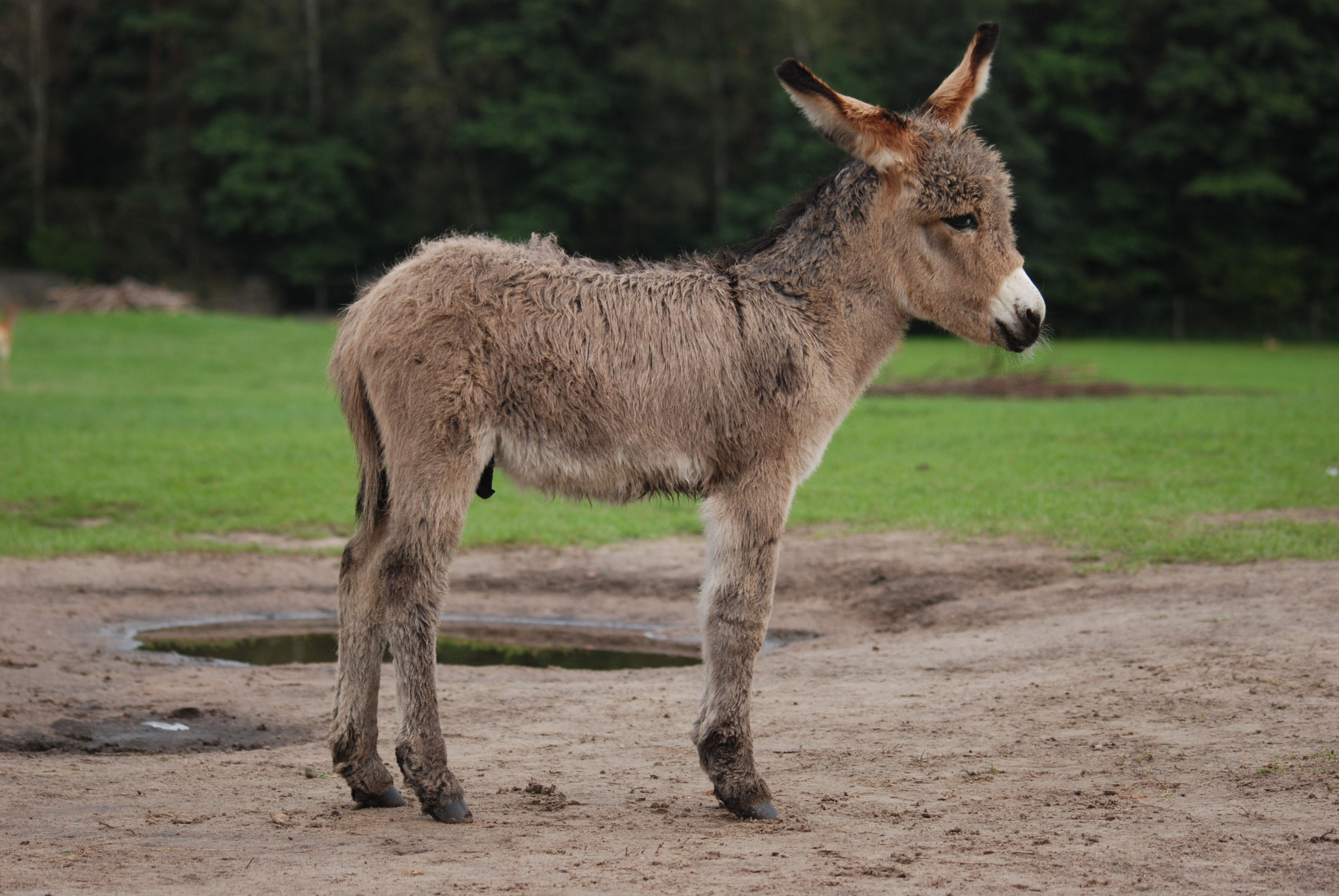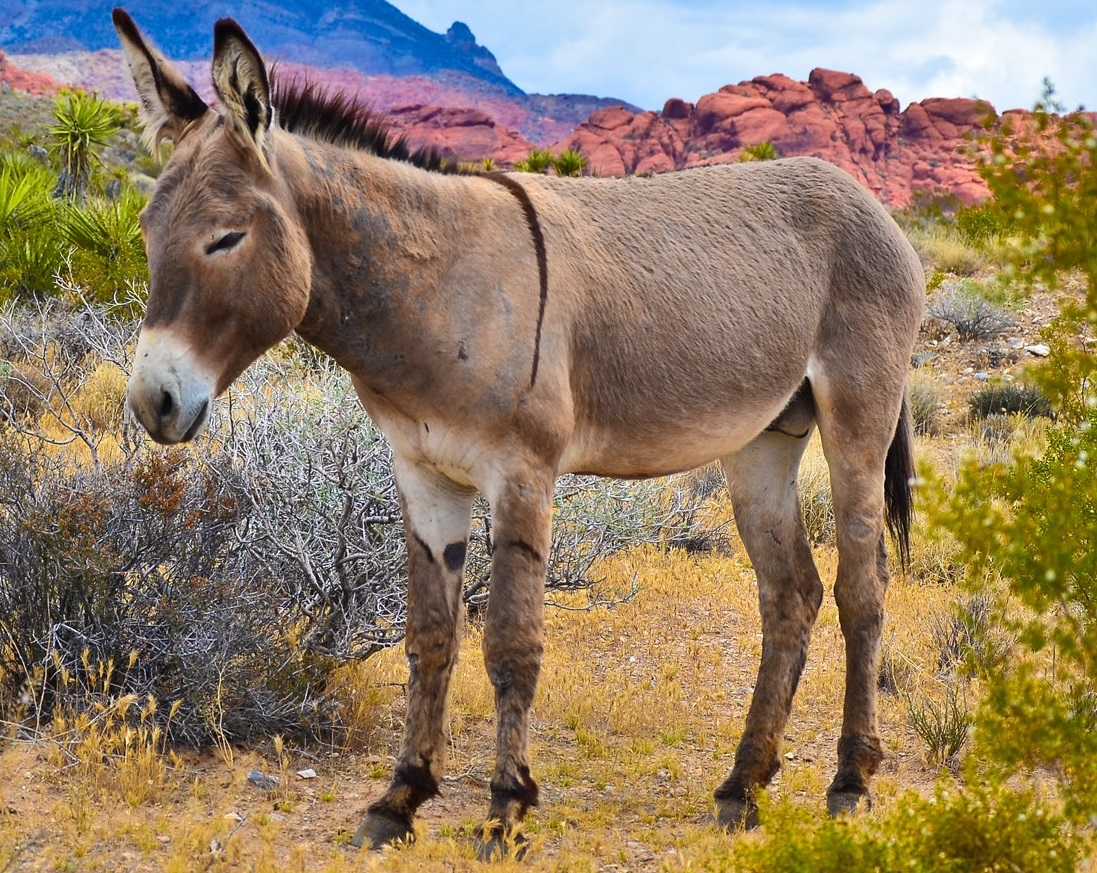Difference Between a Donkey and a Burro
A donkey is a domesticated animal that has the name Equus asinus. A burro is a wild donkey that was found originally in Mexico and brought into the United States and released.

What is a Donkey?
Definition:
A donkey is the name of a domesticated animal with the scientific name Equus asinus, which is in the family Equidae, class Mammalia.
Distribution:
The donkey is found throughout the world today on almost every continent where they are often used as pack animals. The highest densities of donkeys are usually found in those countries that are classified as third world countries. This is where donkeys become important in such ventures as small scale farming and transportation of people and goods. Donkeys can also be used as a source of meat and milk.
Origin:
The first domesticated animals called donkeys are believed to have been bred about 6000 years ago. The first donkeys are believed to have been introduced to the new world sometime during the 15th century by explorers.
Properties:
A donkey looks similar to a horse, and it has an elongated face and long ears. Donkeys also have a tail similar to that of the cow, and you can find different size donkeys including miniature and stout. The donkeys are herbivorous animals that feed on plant material and can also be given fruits and vegetables along with the usual foodstuffs such as straw, grass, and hay.
Housing and lifespan:
Donkeys can be kept inside a barn when conditions are bad in some cases. Donkeys are often given supplemental food by their owners such that they have an advantage over wild relatives that have to forage for food. This means that donkeys have less environmental stresses placed on them compared with burros, and thus the average lifespan is also usually longer. A donkey has an average lifespan of about 40 to 50 years. In addition, there are different breeds of donkey which may also have variations in lifespan.

What is a Burro?
Definition:
The term burro is used to refer to a wild type of donkey that is descended from Mexican or Spanish or North African animals. There are still populations of wild burros found in some parts of the world. The scientific name of a burro is Equus asinus, which is the same as that of the donkey.
Distribution:
The burros found in the United States are believed to have been introduced by the Mexicans who were exploring the region in the 15th century at the time of the famous gold rush that was taking place. In the US, wild burros today can still be found in parts of the state of Nevada in shrubby and dry regions. They do, however, tend to avoid areas that are very mountainous.
Origin
The wild asses, also known as burros are believed to have evolved about 4 to 4.5 million years ago at the same time as other types of equines such as horses and zebras evolved.
Properties:
Burros often look similar to donkeys and have the long faces and ears typical of these animals, and also feed on vegetation such as grass and shrubs that they find out while foraging in the wild.
Housing and lifespan:
Burros are animals that often do not live as long as the domesticated animals, the donkeys, do since they are not in an environment that is controlled by humans. This means that the burros are more susceptible to changes in the environment including a lack of food and also are more susceptible to sudden bad weather conditions. They, therefore, have an average lifespan of about 25 to 30 years.
Difference between a Donkey and a Burro?
Definition
A donkey is a domesticated animal which has the scientific name Equus asinus. A burro is a wild animal that is a type of Equus asinus.
Distribution
The distribution of the donkey is worldwide and they occur on almost every continent. The distribution of the burro today is more limited, but it does occur in places such as the state of Nevada in the United States.
Breeding season
The breeding season of the donkey is all year round since the animal is domesticated and so humans can provide conditions conducive to a year round reproduction. The breeding season of the burro is the wet season when conditions mean more food for developing offspring and parents.
Average lifespan
In general, the average lifespan of a donkey ranges from 40 to 50 years. In comparison, the average lifespan of a burro ranges only from 25 to 30 years.
Origin
The first domesticated donkeys are thought to have been around and been bred about 6000 years ago. The burro is an animal that arose at around the same time as all the other animals in the family Equidae, the horses and the zebras, at about 4 to 4.5 million years ago.
Table comparing a Donkey and a Burro

Summary of a Donkey Vs. a Burro
- The donkey and burro both are very similar in what they look like and what they feed on.
- Both animals are herbivorous mammals in the family Equidae and the scientific name Equus asinus.
- The burro refers specifically to wild asses from Mexico, some of which still occur in the United States in Nevada.
- Difference Between Rumination and Regurgitation - June 13, 2024
- Difference Between Pyelectasis and Hydronephrosis - June 4, 2024
- Difference Between Cellulitis and Erysipelas - June 1, 2024
Search DifferenceBetween.net :
Leave a Response
References :
[0]Image credit: https://upload.wikimedia.org/wikipedia/commons/8/80/Equus_asinus_Kadzid%C5%82owo_001.jpg
[1]Image credit: https://en.wikipedia.org/wiki/File:Burro_-_Red_Rock_Canyon_National_Conservation_Area_(18030880416).2.jpg
[2]Abella, Scott R. "A systematic review of wild burro grazing effects on Mojave Desert vegetation, USA." Environmental Management 41.6 (2008): 809-819.
[3]Huggins, B. "Equus asinus". University of Michigan: animal diversity web, 2014, https://animaldiversity.org/accounts/Equus_asinus/
[4]Wilson, R. T. "Distribution and importance of the domestic donkey in circumsaharan Africa." Singapore Journal of Tropical Geography 2.2 (1981): 136-143.
